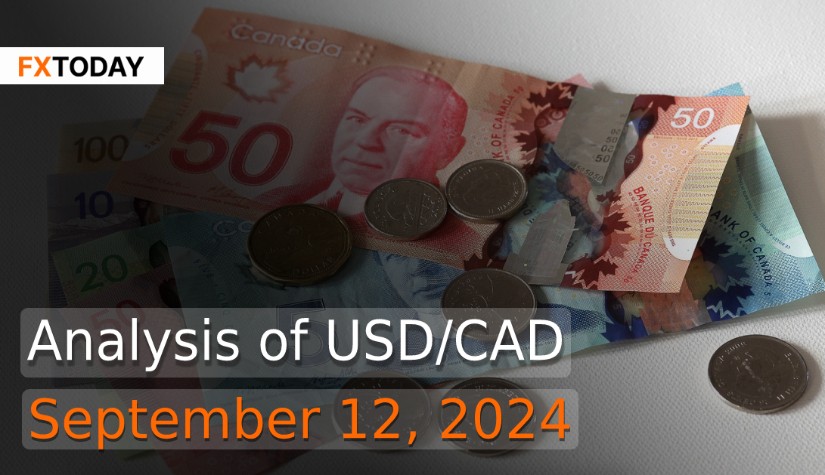Bank of Canada Warns Trade Disruptions Could Threaten Inflation Target Amid Economic Slowdown
Bank of Canada Governor Tiff Macklem noted that global trade disruptions could challenge the bank's ability to maintain its 2% inflation target, requiring a balance between managing inflation and supporting economic growth.
Inflation in Canada has decreased this year due to high interest rates, which reached 5% for over a year before the bank cut rates three times starting in June. Macklem pointed out that with globalization slowing, the costs of global goods might not fall as much, potentially increasing inflation pressures. He emphasized that trade disruptions can cause greater inflation variability and deviations from the 2% target, necessitating a focus on risk management and a deeper understanding of global supply chains.
Moreover, Macklem highlighted that Canada, being a small and open economy heavily reliant on trade, is particularly vulnerable to disruptions. Supply shocks, such as those experienced during the pandemic, create challenges for central banks because monetary policy alone cannot stabilize both growth and inflation simultaneously. The Bank of Canada is updating its models to incorporate scenarios for periods of uncertainty and using more detailed data to better track the effects of trade and industrial policies.
In response to shifting global trade dynamics, Canada recently imposed a 100% import duty on Chinese-made electric vehicles and is considering further tariffs on Chinese critical minerals, batteries, solar products, and semiconductors. Macklem acknowledged that while Canada may not be the cheapest alternative, its strengths include a skilled workforce, reliable energy and transportation networks, and strong financial institutions.
Recent economic indicators show that Canadian economic activity contracted in August for the first time in 13 months, as reflected in the Ivey Purchasing Managers Index, which fell to 48.2 from 57.6 in July. This marks the first time the index has dipped below 50 since July 2023, indicating a reduction in activity.
The services sector also contracted for the third consecutive month, with businesses citing weak demand and the impact of wildfires in Alberta and British Columbia. Despite expectations of future rate cuts, companies remain concerned about high borrowing costs.
The U.S. dollar remained near a four-week high on Thursday as persistent inflation in the U.S. suggested the Federal Reserve might opt for a smaller interest rate cut next week.
U.S. inflation showed signs of stickiness, with the core CPI (excluding food and energy) rising by 0.3% in August, up from 0.2% in July. This reduced the likelihood of a 50-basis-point rate cut by the Federal Reserve in the upcoming policy meeting, shifting expectations towards a 25-basis-point reduction.
The inflation data suggests the Federal Reserve is likely to proceed with a cautious approach to avoid a recession while managing persistent price pressures. Despite mixed signals from the U.S. labor market and a gradual cooling in inflation, the Fed continues to monitor factors like lower oil prices, improved supply chains, and easing rent costs, which collectively reduce the risks of inflation re-escalating.
Moreover, market sentiment was also influenced by a televised debate between U.S. Vice President Kamala Harris and Donald Trump, which increased the perceived electoral chances for Harris.
Elsewhere, BCA Research noted that the Federal Reserve's easing may not prevent a recession in the U.S., and a potential downturn could extend to global trade by early 2025, impacting economies like China's. As a result, the Canadian dollar might fluctuate significantly within a broad range, potentially trending upward over time but also experiencing some additional weakness due to the differing returns between the two countries.
Data for Technical Analysis (1H) CFD USD/CAD
Resistance : 1.3585, 1.3587, 1.3590
Support : 1.3577, 1.3575, 1.3572
1H Outlook
Source: TradingView
Buy/Long 1 If the support at the price range 1.3572 - 1.3577 is touched, but the support at 1.3577 cannot be broken, the TP may be set around 1.3585 and the SL around 1.3570, or up to the risk appetite.
Buy/Long 2 If the resistance can be broken at the price range of 1.3585 - 1.3590, TP may be set around 1.3600 and SL around 1.3575, or up to the risk appetite.
Sell/Short 1 If the resistance at the price range 1.3585 - 1.3590 is touched, but the resistance 1.3585 cannot be broken, the TP may be set around 1.3576 and the SL around 1.3592, or up to the risk appetite.
Sell/Short 2 If the support can be broken at the price range of 1.3572 - 1.3577, TP may be set around 1.3564 and SL around 1.3587, or up to the risk appetite.
Pivot Points Sep 12, 2024 02:48AM GMT
|
Name
|
S3
|
S2
|
S1
|
Pivot Points
|
R1
|
R2
|
R3
|
|---|---|---|---|---|---|---|---|
| Classic | 1.3567 | 1.3572 | 1.3576 | 1.3581 | 1.3585 | 1.359 | 1.3595 |
| Fibonacci | 1.3572 | 1.3575 | 1.3577 | 1.3581 | 1.3585 | 1.3587 | 1.359 |
| Camarilla | 1.3578 | 1.3579 | 1.358 | 1.3581 | 1.3582 | 1.3583 | 1.3584 |
| Woodie's | 1.3567 | 1.3572 | 1.3576 | 1.3581 | 1.3585 | 1.359 | 1.3595 |
| DeMark's | - | - | 1.3579 | 1.3582 | 1.3588 | - | - |
Sources: Investing 1, Investing 2
















